In a market characterized by wholesale-retail volatility and soaring customer acquisition costs in digital marketing, brands should look to the past to craft strategic approaches for reaching consumers and effectively boosting direct-to-consumer sales. Retail isn’t dead, it’s just how you approach it.
To effectively forecast and advise brands navigating the retail sector, it’s essential to consider key industry events that have shaped the current landscape. Between 2015 and 2020, e-commerce platforms like Net-a-Porter, Farfetch, and Amazon experienced explosive growth due to their unparalleled convenience, accessibility, and competitive pricing, whereas traditional department stores struggled to adapt. While the Covid pandemic exacerbated the situation, by 2023, 85% of department stores operated by names like Nordstrom, Neiman Marcus, Macy’s, Lord & Taylor, Sears, Debenhams and John Lewis had closed down.
The rise of digitally native, direct-to-consumer (DTC) brands such as Glossier, Warby Parker, Everlane, and Bombas further transformed the retail landscape. These brands bypassed traditional retail channels to sell directly to customers online, using innovative marketing tactics that posed a significant threat to traditional in-store retailers. The Covid-19 pandemic accelerated these trends, pushing more consumers to shop online and leading to the decline of many brick-and-mortar businesses.
The post-pandemic era has sparked a fresh craving for tangible human connections, leading to a revival of physical retail. However, the traditional store experience has undergone a transformation. With consumers gravitating towards the convenience of online shopping, they now demand an elevated in-store experience. Browns, a London-based designer fashion retailer that was acquired by Farfetch in 2015, reopened its flagship in a four-floor townhouse on Brook Street in one of London’s wealthiest areas. This Grade II listed property showcases a brand immersive experience on one floor, a high-end restaurant on another, and a club floor exclusively used by its personal shoppers for their VIP guests. Whether it’s immersing themselves in the brand’s world, as Selfridges offers with The Corner Shopor VIPs exploring exclusive private shopping boutiques like those created by Chanel and Tom Browne, meeting these expectations requires substantial investment to authentically capture the brand essence in real-world settings.
Meanwhile, e-commerce retailers that thrived during Covid are now grappling with declining performance, revealing the limitations of a digital-centric approach. For instance, Matches, once a leading luxury retailer, entered administration in March 2024 with over £210 million in debt, leaving many brands out of pocket, just three months after being acquired by Frasers Group. Nina Briance, Founder and CEO of Cult Mia, noted that Matches struggled with stagnating growth and failed to meet changing customer expectations. She stated, “Matches’ online business was founded in a different era of luxury e-commerce. Today, this previously successful online luxury fashion model has a number of significant issues, [including] weak fundamentals and the inability to adapt to the change in product and service expectations of the luxury customer.”
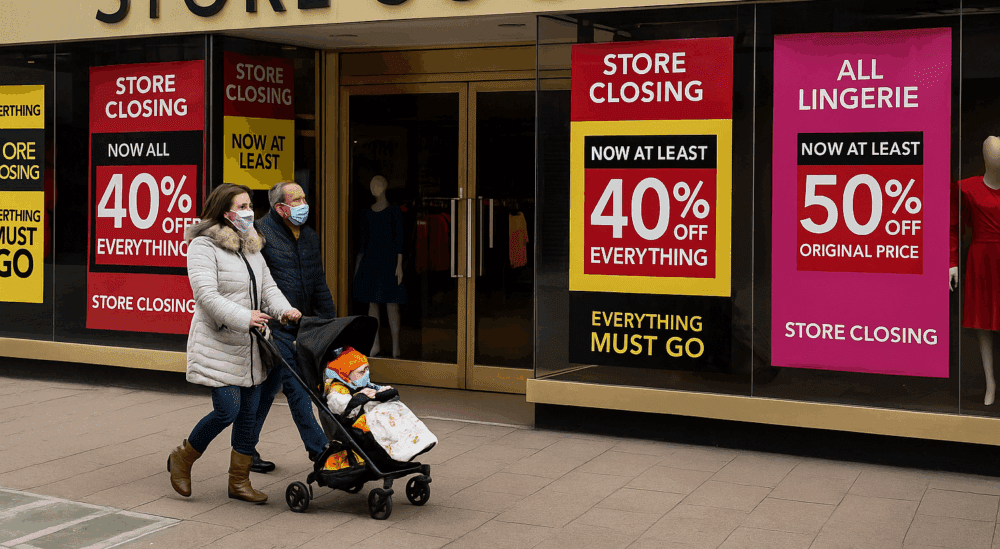
Designers and luxury labels are now reducing their reliance on wholesale partners, investing in their own DTC businesses to regain control over their operations and reconnect with customers. However, this shift is happening in a saturated market, with a growing number of DTC brands and rising digital marketing costs, making the return on investment slow to materialise. As Hilary Peltz, found of in.Parallel notes, “it’s increasingly challenging for new brands to cut through the digital noise to gain customer trust and not simply be perceived as another Instagram brand. The consideration cycle for a customer to purchase from a new brand can be anywhere from 3-5 months.”
With the high costs of creating physical brand environments, yet especially crucial for emerging brands to directly engage with and sell to customers in reliable physical settings, there’s value in revisiting the time-tested ‘trunk show’ concept.
Originating in the early 1800s to describe travelling salesmen showcasing their latest products from steamer trunks, the term ‘trunk show’ evolved to mean brands bringing their offerings directly to customers, often with local hosts co-hosting the event. This direct sales model gained new traction in the 1940s when Earl Tupper introduced Tupperware parties to sell his food storage containers directly to his target customer – housewives. These events, hosted by and for women in their communities, moved from house to house, with brand representatives displaying and selling the latest Tupperware models.
The essence and success of these events lay in the personal connections forged between hosts and guests, creating immersive social experiences that went beyond mere transactions. Tupperware hosts acted as brand ambassadors, instilling confidence in their guests to purchase this unknown product and leveraging the intimacy of direct interactions and close relationships. This approach enabled Tupperware to forge lasting connections and brand loyalty, while revolutionising the suburban retail landscape and empowering women to enter the business world by leveraging their own networks.
Today, trunk shows and intimate shopping events have become increasingly popular for both emerging brands and designers to showcase their products directly to customers, much like Tupperware representatives did with their friends. These personal and intimate experiences often take place in exclusive settings or private residences, with guest lists curated from the host’s or brand’s network, including respected and influential individuals familiar with the brand. By leveraging the trust guests have for the host, brands can build their own credibility. These events, typically held over a single day or a series of days, provide an ideal environment for generating sales, boosting brand awareness, and encouraging customer retention.
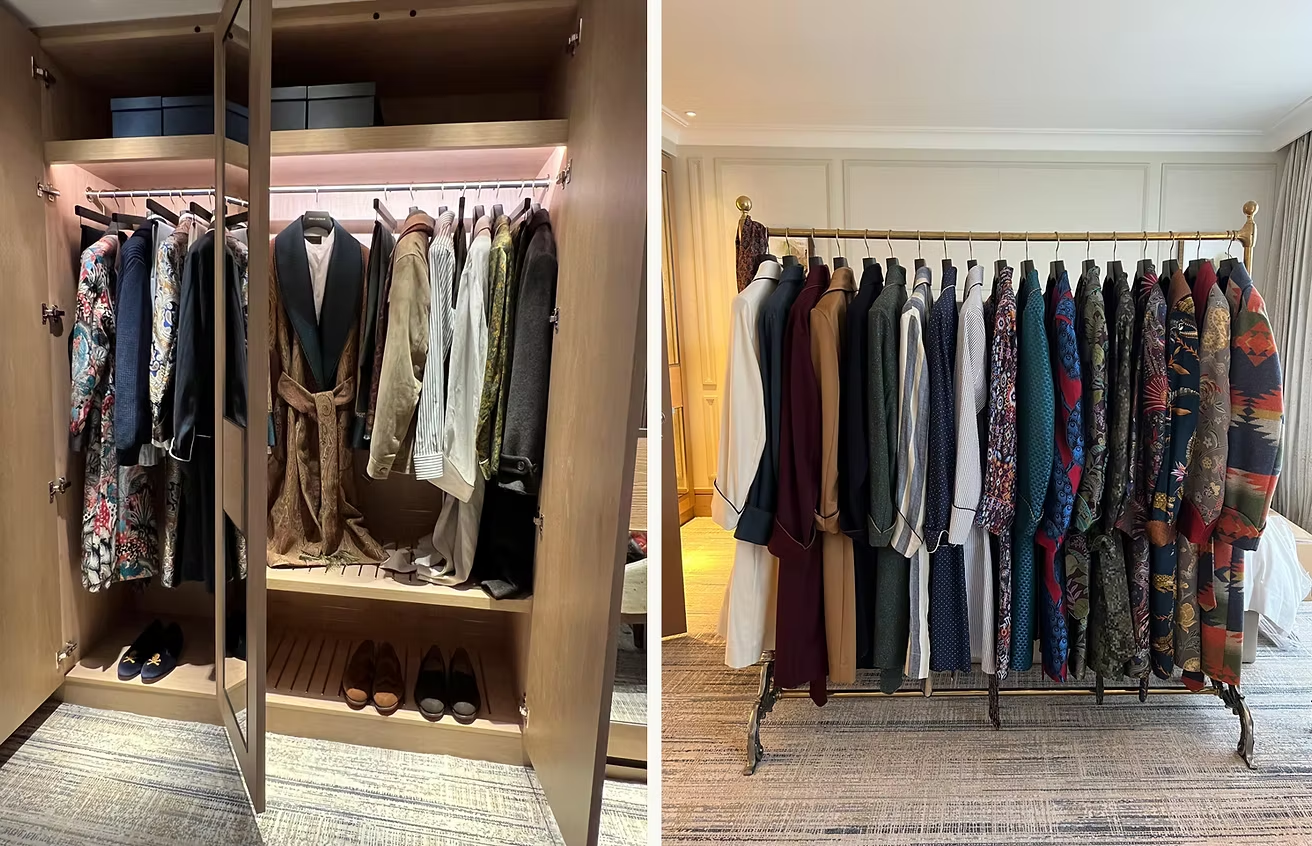
1. Exclusivity & Reciprocity
Exclusivity drives the success of trunk show shopping events. These small-scale, invitation-only gatherings make customers feel privileged to be part of an exclusive group. This selective attendance encourages participation and offers an ideal platform for small and emerging brands to build DTC relationships and strategies. Often, the showcased products are not yet available to the wider public, enhancing the brand’s allure. Attendees receive personal invitations and the chance to browse and buy unique items. The unique locations, often private homes or special venues, further enhance exclusivity and prestige, making customers feel valued. By offering these intimate shopping experiences, trunk shows can significantly boost customer engagement and loyalty, serving as a valuable initial DTC retail strategy for emerging brands aiming to stand out in a competitive market.
Why these events work?
“These events thrive because brands leverage the host's network, presenting their products in a unique and intimate setting that prioritises the customer's location. This personalised approach makes the customers feel valued, as the store is coming directly to them."
says Hilary Peltz, in.Parallel Founder.
Additionally, when events are hosted at private homes, there’s an underlying social pressure of reciprocity. Not only to show up, but also to make purchases. As Noor Al-Rahim, founder of Nara Niro said, “choose a host you know your guests will want to shop in front of.” This principle contributed to the success of Tupperware parties. Similar to how guests might bring a bottle of wine to a dinner party to thank their host, they attend a trunk show with the intention of making a purchase as a gesture of appreciation.
2. Interaction
The COVID-19 pandemic has highlighted our intrinsic need for human connection and social interaction, influencing shopping preferences towards more communal experiences. According to New Epsilon research, 80% of consumers are more likely to make a purchase when brands offer personalized experiences[1]. Trunk shows cater to this desire by providing opportunities for attendees to forge meaningful relationships while experiencing a brand and its products. These events create a fun positive atmosphere, encouraging guests to stay longer, interact more, and ultimately make purchases. Research from the Journal of Consumer Psychology supports this, showing that social interactions can enhance shopping enjoyment and increase spending.
Trunk shows also offer a unique chance to meet and interact with designers or brand representatives, allowing customers to gain insights into the brand's story and creative process. Nara Niro founder and creative director, Noor Al-Rahim mentions, “I like meeting people. Trunk shows give me the chance to meet people who I otherwise wouldn’t and by chatting to them you get to know what they’re doing, where they’re going, and what they’re shopping for. The best events [for Nara Niro] have been when the customers are not just consuming but experiencing the brand and product. We even had one person spend the entire day with us – chatting and shopping.” In essence, trunk shows satisfy the need for connection and foster a deeper bond between customers and brands, driving both engagement and sales.
Aside from their commercial objectives, trunk shows are designed to be fun, light-hearted, and enjoyable social experiences, bringing together friends, family, and the broader community. The relaxed environment and casual conversations not only enhance brand credibility but also bolster sales. This positivity fosters strong post-purchase associations, as customers link these good feelings with the brand and its future events.

3. Incentives
At these events, it’s often customary to offer invited individuals a ‘Friends & Family’ discount or gift with purchases on any goods sold at the shopping event as a way to express gratitude and encouraging buying. This approach has a dual effect on customer attitudes. Attendees feel important and appreciated when offered exclusive prices, enhancing their shopping experience and increasing their likelihood of purchase. Additionally, the social influence comes into play; seeing other attendees take advantage of discounts on limited collections creates a bandwagon effect, prompting individuals to follow suit to avoid missing out on a great deal. Ultimately, incentivizing these events adds immediate value for the customer while benefiting the brand.
4. Trust
In an era saturated with advertisements and wary of impersonal marketing tactics, trunk shows stand out for their intimate and authentic approach. These events enable direct interaction between customers and brand representatives, fostering trust and reliability. Meeting designers and brand representatives face-to-face allows customers to gain confidence in the products’ quality and value through personal testimonials. This interaction aids in building credibility and customer trust in the brand. According to Nielsen, 92% of consumers trust recommendations from friends and family over other forms of advertising, a strategy also utilised at Tupperware parties, where hosts’ recommendations carried significant weight within their guests’ social circles.
As Hilary Peltz, in.Parallel’s founder emphasises,
“It’s so important that a brand representative or the founder is present at these events, to meet, style and get to know their local clientele. It does what a website cannot – it humanises it and turns a 2D brand into a 3D one.”
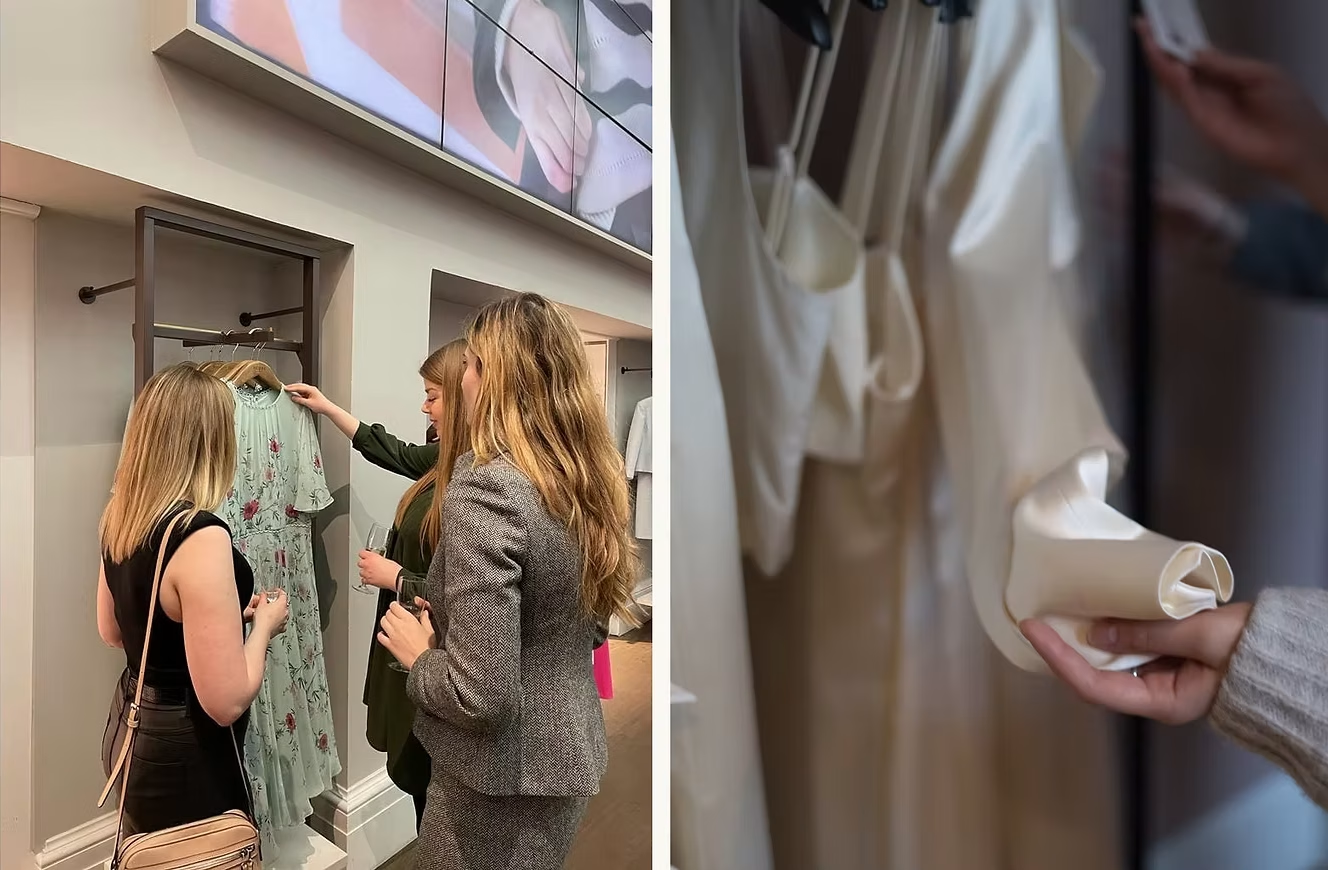
5. Priming
These shopping events offer a valuable opportunity for brands to engage with their target audience, but to truly benefit, careful pre-event marketing is essential. The success of a trunk show largely depends on how well brands prime their guests beforehand. Building anticipation through organic and paid marketing channels entices guests to attend and moves them through the initial stages of the conversion funnel. By the time they arrive, they are primed for conversion. As Hilary Peltz, in.Parallel’s founder notes, “Priming or pre-meditative word-of-mouth marketing builds trust and awareness, prompting guests to research the brand and its products, so when they arrive they already know what they want to buy. You’re effectively shortening the consideration cycle to almost immediate”.
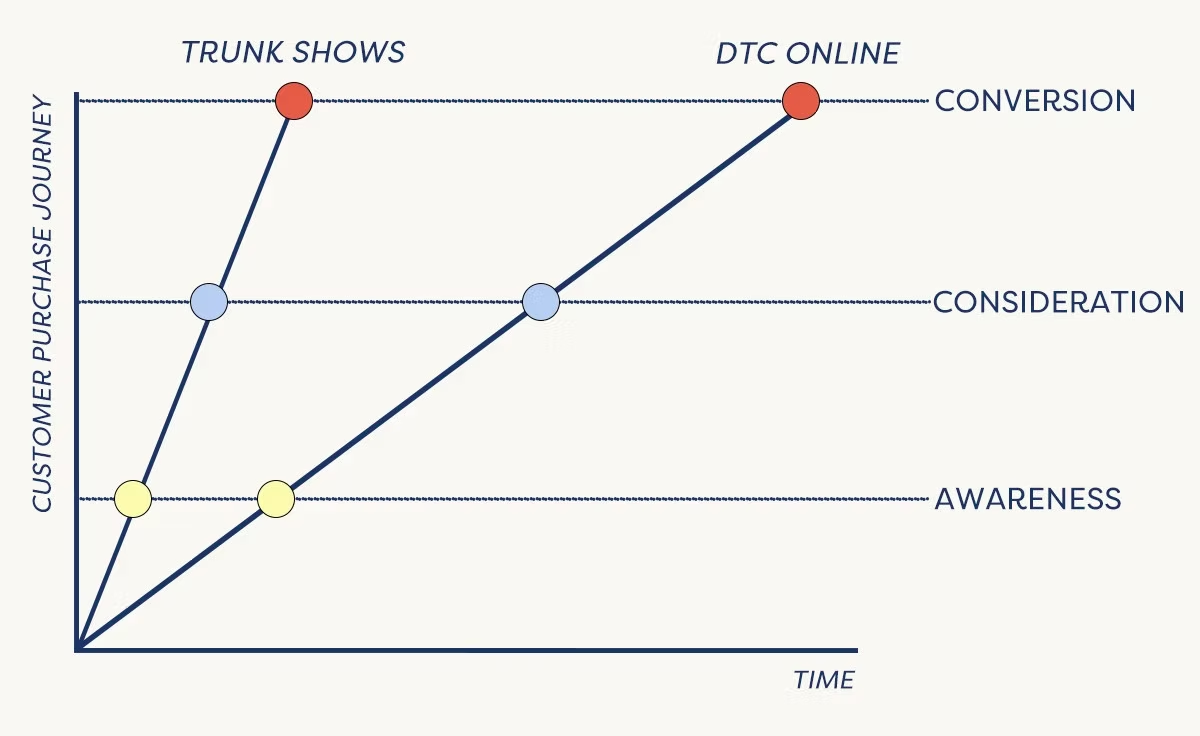
Creating sufficient awareness before any shopping event is crucial, but sustaining excitement to build broader awareness and a lasting buzz is equally important. This can be accomplished through additional marketing tactics. For instance, hosting a dinner the night before with influential VIP guests and press, or employing a professional photographer to provide quality content for social channels and publications can significantly increase exposure for both the event and the brand.
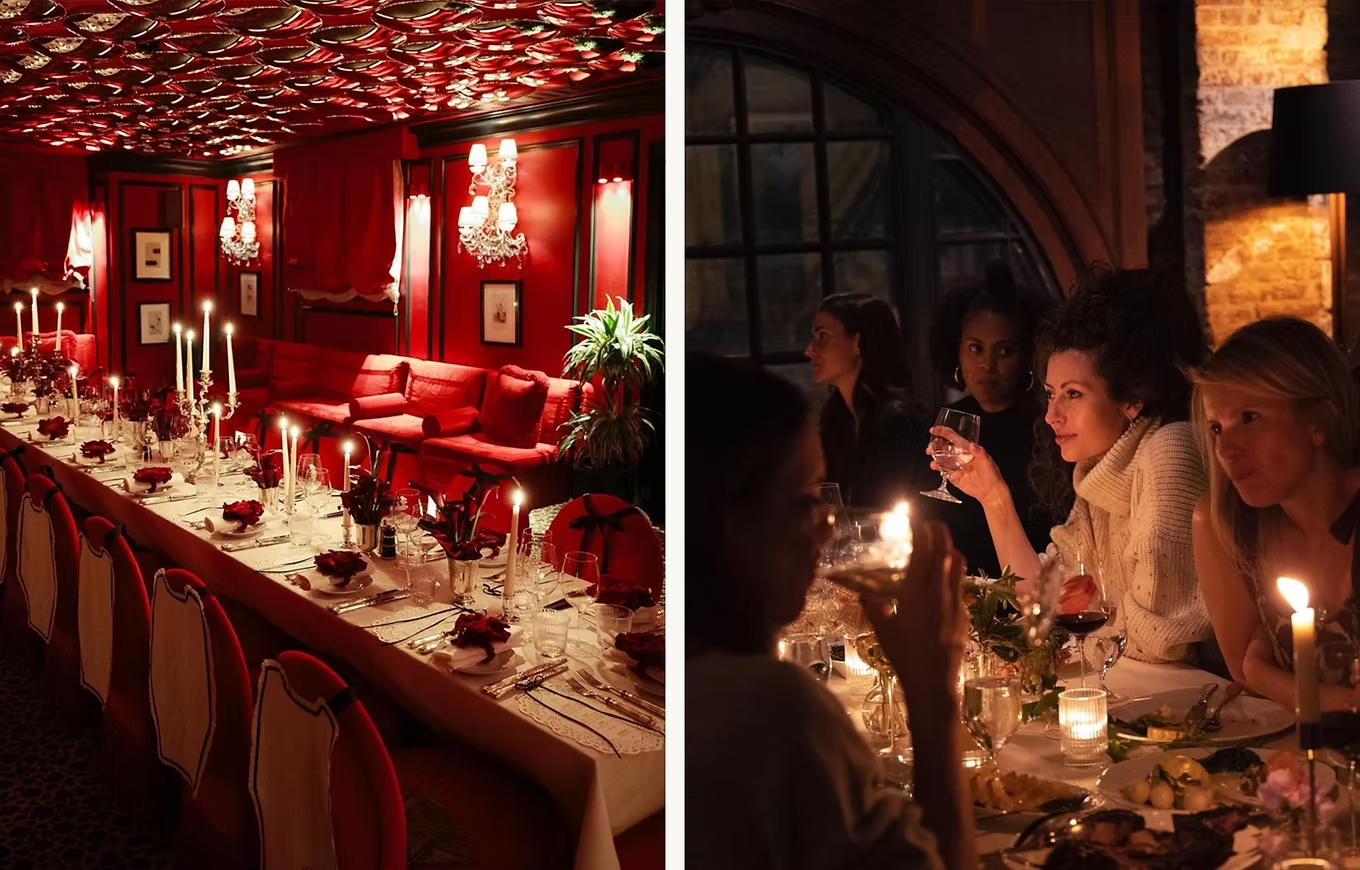
This article was published in June 2024.